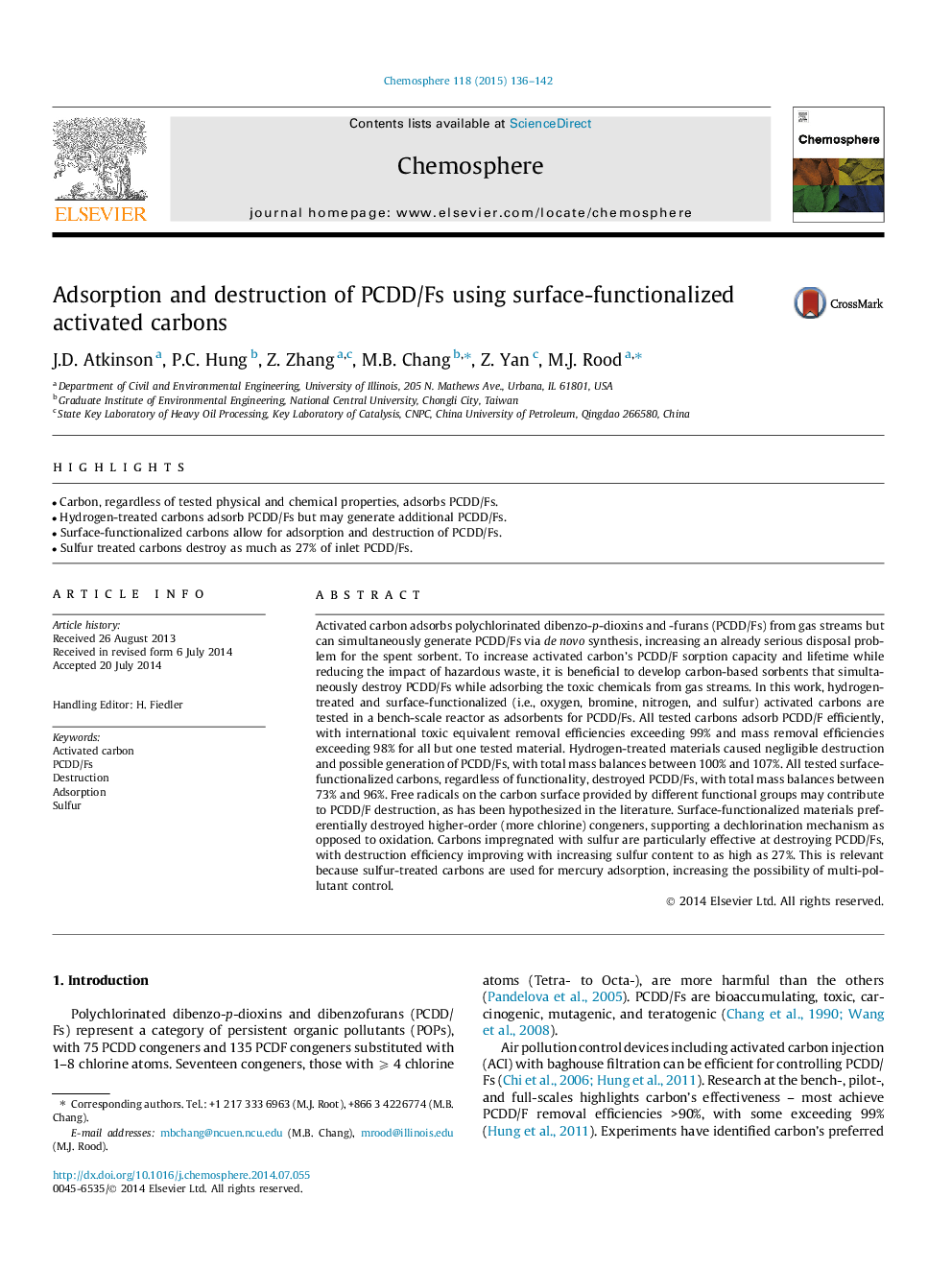| Article ID | Journal | Published Year | Pages | File Type |
|---|---|---|---|---|
| 6308356 | Chemosphere | 2015 | 7 Pages |
Abstract
Activated carbon adsorbs polychlorinated dibenzo-p-dioxins and -furans (PCDD/Fs) from gas streams but can simultaneously generate PCDD/Fs via de novo synthesis, increasing an already serious disposal problem for the spent sorbent. To increase activated carbon's PCDD/F sorption capacity and lifetime while reducing the impact of hazardous waste, it is beneficial to develop carbon-based sorbents that simultaneously destroy PCDD/Fs while adsorbing the toxic chemicals from gas streams. In this work, hydrogen-treated and surface-functionalized (i.e., oxygen, bromine, nitrogen, and sulfur) activated carbons are tested in a bench-scale reactor as adsorbents for PCDD/Fs. All tested carbons adsorb PCDD/F efficiently, with international toxic equivalent removal efficiencies exceeding 99% and mass removal efficiencies exceeding 98% for all but one tested material. Hydrogen-treated materials caused negligible destruction and possible generation of PCDD/Fs, with total mass balances between 100% and 107%. All tested surface-functionalized carbons, regardless of functionality, destroyed PCDD/Fs, with total mass balances between 73% and 96%. Free radicals on the carbon surface provided by different functional groups may contribute to PCDD/F destruction, as has been hypothesized in the literature. Surface-functionalized materials preferentially destroyed higher-order (more chlorine) congeners, supporting a dechlorination mechanism as opposed to oxidation. Carbons impregnated with sulfur are particularly effective at destroying PCDD/Fs, with destruction efficiency improving with increasing sulfur content to as high as 27%. This is relevant because sulfur-treated carbons are used for mercury adsorption, increasing the possibility of multi-pollutant control.
Related Topics
Life Sciences
Environmental Science
Environmental Chemistry
Authors
J.D. Atkinson, P.C. Hung, Z. Zhang, M.B. Chang, Z. Yan, M.J. Rood,
